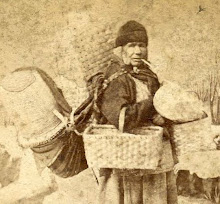Happy Spring Weavers !! I know its still wet and chilly out there ~ but spring is officially here !!
I've been really busy this winter. Had a chance to weave some "good baskets" this winter. Seems like after all these years ... about 20 of them ... I've finally beginning to weave good baskets. Practice makes perfect !!
I'm also working under a Arts Builds Communities Grant this spring. My project is with working with local youth teaching them how to build rustic furniture. I have three young men who are apprenticing with me. We've walked the forest, learned about healthy forest stewardship and have begun to harvest our saplings.
Last week they built their first benches. Wow, I'm so impressed with their patience and willingness to learn. One young man in particular has really impressed me. He is a good craftsman and has shown consistent respect and leadership. Next we are on to making willow chairs ... I'll keep you posted on their progress.
The Dogwoods have began to bloom Weavers ~ that mean's several things. The Salmon are half way home, the sap is rising in the Cedars, and the willow is ready to be picked and peeled. I'm hoping to get over the hill to the River in a couple of weeks to pick ... ummmmmm I love the smell of fresh peeled willow !!!!
I was hoping to get together with a few of you this spring to finish up winter baskets. I think we all have some weaving materials from last years harvest. Hope you all get a chance to weave or pass those materials on to others less fortunate in their opportunities to harvest.
I imagine you all noticed the new name of my Blog. This year I have decided to honor my Indigenous roots and ancestors. For those of you fortunate to belong to a recognized tribe and have your basket work honored and authenticated ~ what a blessings. For those of us out there who are far from our ancestral homes ~ I know you will understand the need to identify with ones heritage.
I gather and weave to honor my heritage. The basket work I do is Algonquin. My ancestors where the Kichesipirini Algonquin who came from a place in Quebec called L'Isle-aux-Allumettes. In the last two years I've worked hard to model my gathering, weaving and teaching in a manor that I hope brings honor to my ancestors. As always its an honor to share my knowledge and skills with any one of you who are interested.
Megwitch and to all my relations ~ peace and blessings
Nan


